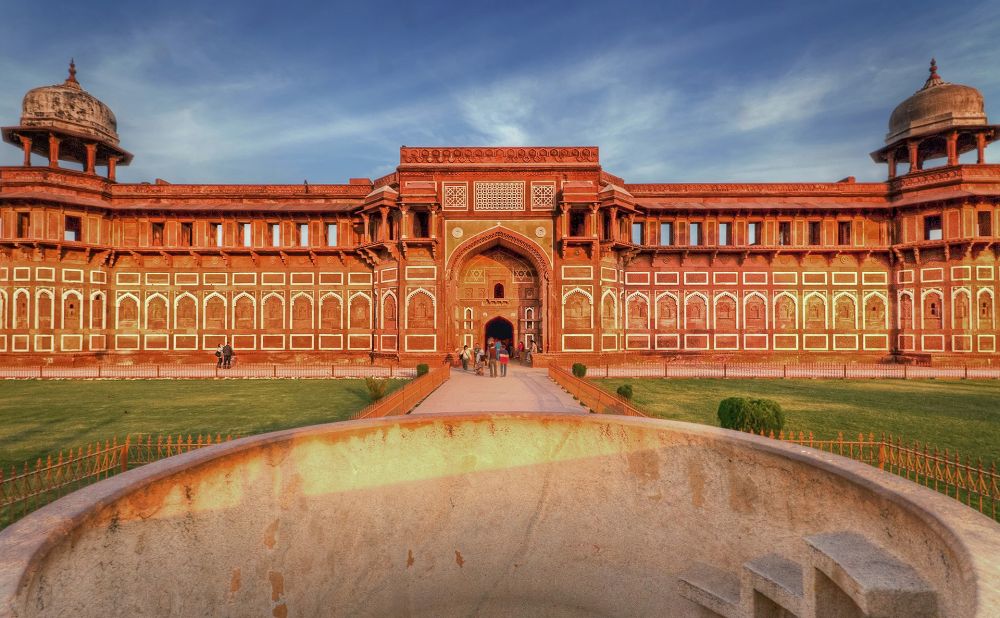

Located in the heart of Agra, within the iconic Agra Fort, Jahangir Palace is a remarkable blend of Rajput and Mughal architectural styles. It was primarily built by the Mughal Emperor Akbar for his son Jahangir, which illustrates the rich historical backdrop of this magnificent structure.
The historical significance of Jahangir Palace started to gain prominence with the rise of the Mughal Empire. However, it wasn’t until the British colonial period that Agra, along with the Agra Fort and its palaces, became a significant tourist destination. The British administration often showcased the grandeur of Mughal architecture to visiting dignitaries.
In the post-independence era, Jahangir Palace garnered attention as part of the larger Agra Fort complex, which was designated a UNESCO World Heritage site in 1983. Since then, tourism at Jahangir Palace has boomed, with visitors coming to admire its splendid architecture and to bask in its historical ambiance.
The architecture of Jahangir Palace is remarkable, boasting a fusion of sandstone and marble. With intricately carved stone brackets, and impressive columns, the palace stands as a testament to the architectural expertise of the Mughal era. Tourism here offers patrons the chance to step back in time and experience the opulence that once defined the lifestyle of the Mughal princes.
In recent times, there has been an increasing trend of digital engagement within the tourism industry in Agra. Technological advancements such as AR (Augmented Reality) tours and VR (Virtual Reality) experiences are starting to become popular, allowing tourists to experience Jahangir Palace and other historical sites in an immersive manner.
Eco-friendly tourism is also on the rise, with many tourists now preferring to visit sites in a manner that is sustainable and socially responsible. Efforts are ongoing to preserve the integrity of Agra's historical sites, including Jahangir Palace, bolstering its appeal to environmentally conscious travelers.
Additionally, the growing popularity of experiential tourism means that visitors to Jahangir Palace not only explore its architecture but also engage with the local culture. They can participate in activities such as traditional craft workshops, Mughal-era culinary experiences, and explore the markets of Agra for a well-rounded historical and cultural experience.
When planning a visit to Jahangir Palace, tourists are advised to include the Agra Fort on their itinerary. The best visiting months are October to March when the weather is pleasant. Jahangir Palace is open to visitors every day, and it is recommended to hire a knowledgeable guide to gain deeper insights into its history and significance.
In summary, Jahangir Palace remains an integral component of Agra's historical tourism narrative, attracting visitors worldwide with its architectural brilliance and rich cultural heritage.